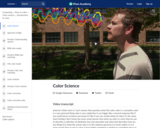
Overview of this lesson.
- Subject:
- Applied Science
- Arts and Humanities
- Computer Science
- Graphic Arts
- Material Type:
- Lesson
- Provider:
- Khan Academy
- Provider Set:
- Pixar
- Author:
- Disney Pixar
- Khan Academy
- Date Added:
- 07/14/2021

Overview of this lesson.
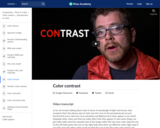
In this video we will explore how perception plays a role in the colors we 'think' we see.
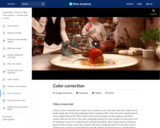
In this video you will visit our color suite to see how we tweak colors to meet artistic goals.
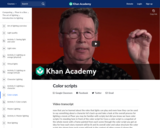
Introduction to color scripts.

Short Description:
NewParaColour theory covers a long history from antiquity to modern times. It includes academic and scientific investigations into how we see and understand colour. It also includes practical applications for using colour in creative work.NewParaThis learning resource covers the history of colour theory, how we see colour, and how to use colour systems to mix colour and create colour relationships.NewParaAlso included in this resource are quizzes to test your knowledge, and practical learning activities to guide users in applications of colour theory for art and design. It's useful for anyone working with colour in creative and scientific fields.
Word Count: 51635
(Note: This resource's metadata has been created automatically by reformatting and/or combining the information that the author initially provided as part of a bulk import process.)

This class explores sound and what can be done with it. Sources are recorded from students' surroundings - sampled and electronically generated (both analog and digital). Assignments include composing with the sampled sounds, feedback, and noise, using digital signal processing (DSP), convolution, algorithms, and simple mixing. The class focuses on sonic and compositional aspects rather than technology, math, or acoustics, though these are examined in varying detail. Students complete weekly composition and listening assignments; material for the latter is drawn from sound art, experimental electronica, conventional and non-conventional classical electronic works, popular music, and previous students' compositions.

Short Description:
This course will introduce the student to Microsoft Excel.
Long Description:
This textbook was written for a community college introductory course in spreadsheets utilizing Microsoft Excel. While the figures shown utilize Excel 2019, the textbook was written to be applicable to other versions of Excel as well. The book introduces new users to the basics of spreadsheets and is appropriate for students in any major who have not used Excel before. This textbook includes instructions for Excel for Mac also.
Word Count: 65627
(Note: This resource's metadata has been created automatically by reformatting and/or combining the information that the author initially provided as part of a bulk import process.)
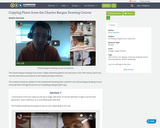
Charles Bargue Drawing Course introductionThe Charles Bargue Drawing Course was a highly influential guide to art instruction in the 19th century, which has recently returned to prominence in the Realist painting movement. This module introduces students to the fundamental drawing skills covered in the Charles Bargue Drawing Course, and leads them through the process of completing a Bargue plate copy.

First impression matters! Learn 3 quick and easy ways to create attractive and professional-looking PowerPoint title slide. These PowerPoint templates are open educational resource, created for educators, researchers and students. These templates accompanied an online workshop (see the embedded video) to learn how to make your slides look professionals.

This document details a simple way for anyone to create an interactive digital adventure game with zero programming. This activity can be done as an individual or with a team. Use a cloud-based PowerPoint program to get started (Google slides recommended).
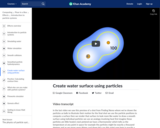
How do we draw a surface of water using only particles? In this video we'll introduce a powerful analogy using heat to help us out.

Creating Playable Stories Series
Word Count: 19868
(Note: This resource's metadata has been created automatically by reformatting and/or combining the information that the author initially provided as part of a bulk import process.)

CMS.611J / 6.073 Creating Video Games is a class that introduces students to the complexities of working in small, multidisciplinary teams to develop video games. Students will learn creative design and production methods, working together in small teams to design, develop, and thoroughly test their own original digital games. Design iteration across all aspects of video game development (game design, audio design, visual aesthetics, fiction and programming) will be stressed. Students will also be required to focus test their games, and will need to support and challenge their game design decisions with appropriate focus testing and data analysis.

This course examines cultural performances of Asia, including both traditional and contemporary forms, in a variety of genres. Students will explore the communicative power of performances with attention to the ways performers, media, cultural settings, and audiences interact. The representation of cultural difference is considered and how it is altered through processes of globalization. Performances are viewed live when possible, but the course also relies on video, audio, and online materials as necessary. There are no prerequisites for this course and it is taught in English.

This class is divided into a series of sections or "modules", each of which concentrates on a particular large technology-related topic in a cultural context. The class will start with a four-week module on Samurai Swords and Blacksmithing, followed by smaller units on Chinese Cooking, the Invention of Clocks, and Andean Weaving, and end with a four-week module on Automobiles and Engines. In addition, there will be a series of hands-on projects that tie theory and practice together. The class discussions range across anthropology, history, and individual development, emphasizing recurring themes, such as the interaction between technology and culture and the relation between "skill" knowledge and "craft" knowledge.
Culture Tech evolved from a more extensive, two-semester course which formed the centerpiece of the Integrated Studies Program at MIT. For 13 years, ISP was an alternative first-year program combining humanities, physics, learning-by-doing, and weekly luncheons. Culture Tech represents the core principles of ISP distilled into a 6-unit seminar. Although many collections of topics have been used over the years, the modules presented here are a representative sequence.

This class addresses important, current debates in media with in-depth discussion of popular perceptions and policy implications. Students will engage in the critical study of the economic, political, social, and cultural significance of media, and learn to identify, analyze, and understand the complex relations among media texts, policies, institutions, industries, and infrastructures. This class offers the opportunity to discuss, in stimulating and challenging ways, topics such as ideology, propaganda, net neutrality, big data, digital hacktivism, digital rebellion, media violence, gamification, collective intelligence, participatory culture, intellectual property, artificial intelligence, etc., from historical, transcultural, and multiple methodological perspectives.

This course focuses on cyberspace and its implications for private and public, sub-national, national, and international actors and entities.

This course is an introductory exploration of documentary film theory and production, focusing on documentaries about science, engineering, and related fields. Students engage in digital video production as well as social and media analysis of science documentaries. Readings are drawn from social studies of science as well as from documentary film theory. The courses uses documentary video making as a tool to explore the worlds of science and engineering, as well as a tool for thinking analytically about media itself and the social worlds in which science is embedded. The course includes a hands-on lab component devoted to digital video production, in addition to classroom lectures and in-class film screenings.
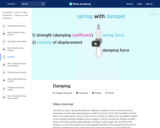
Now we add a damper to our spring.

This course explores visualization methodologies to conceive and represent systems and data, e.g., financial, media, economic, political, etc., with a particular focus on climate change data in this version of the course. Topics include basic methods for research, cleaning, and analysis of datasets, and creative methods of data presentation and storytelling. The course considers the emotional, aesthetic, ethical, and practical effects of different presentation methods as well as how to develop metrics for assessing impact. Coursework includes readings, visualization exercises, and a final project.
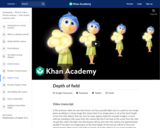
In this video we'll explore why regions in our scenes can go "out of focus." The region of our scene which is in focus call depth of field..

This course explores the reciprocal relationships among design, science, and technology by covering a wide range of topics including industrial design, architecture, visualization and perception, design computation, material ecology, and environmental design and sustainability. Students will examine how transformations in science and technology have influenced design thinking and vice versa, as well as develop methodologies for design research and collaborate on design solutions to interdisciplinary problems.

Teaches creative design based on the scientific method through the design, engineering, and manufacture of a detailed inlaid tile. This is an introductory lecture/studio course designed to teach students the basic principles of design and expose them to the design process. Throughout the course, students will be introduced to the terminology and concepts that underlie all forms of visual art; which--in many ways--forms the basis for the design of all physical objects. Along with learning mechanical skills, thinking both critically and visually, and working with different media, the students will consider how the arts grow out of and respond to particular cultural contexts and ideas; and how these thinking patterns can be applied to virtually all types of design.
Presentations, lectures, demonstrations, discussions and various artistic works will be used to show students how other artists and designers have dealt with the same issues they will be facing in lab. Each class will begin with a critique of the students' homework, followed by a discussion (and presentation when appropriate) of the pertinent issues of that week. All aspects of the course will aid the teams of students in designing and building a major inlaid tile whose elements are designed as digital solid models and manufactured on an abrasive waterjet machining center. The course will conclude with an exhibit of the completed tiles open to the MIT and the Greater-Boston public. Enrollment is limited to 16 students who will be divided into groups of 4 students each. Preference will be given to students who attend the first day of class in a pre-selected team of 4.

Short Description:
This book touches on design thinking, virtual reality, and 3D printing, and their applications in our world.
Long Description:
This book offers a blend of theory and practice in guiding readers to apply design thinking principles to solving some of our world’s biggest problems. At the same time, readers are encouraged to become aware of new and emerging technologies that make prototyping and applying solutions a reality.
Word Count: 38787
(Note: This resource's metadata has been created automatically by reformatting and/or combining the information that the author initially provided as part of a bulk import process.)

Feedback and notes.

This course examines the theory and practice of using computational methods in the emerging field of digital humanities. It develops an understanding of key digital humanities concepts, such as data representation, digital archives, information visualization, and user interaction through the study of contemporary research, in conjunction with working on real-world projects for scholarly, educational, and public needs. Students create prototypes, write design papers, and conduct user studies.

Word Count: 39268
(Note: This resource's metadata has been created automatically by reformatting and/or combining the information that the author initially provided as part of a bulk import process.)

Short Description:
The Digital Methods for Disability Studies course introduces students to a range of technologies and teaches them to think critically with and through media objects, practices, and processes. Through texts, videos, podcasts, games, and interactive activities, students develop their critical thinking, close-reading, textual analysis, platform analysis, visual analysis, and critical game design skills. This course offers students an opportunity to both interrogate the digital realm as a site of inequality and to harness digital tools and methods in addressing complex social challenges.
Long Description:
The Digital Methods for Disability Studies Pressbook is a course that introduces students to a range of technologies and teaches them to think critically with and through media objects, practices, and processes. Students ask critical questions about digital methods and explore how these methods work with other forms of knowledge production. Through texts, videos, podcasts, games, and interactive activities, students develop their critical thinking, close-reading, textual analysis, platform analysis, visual analysis, and critical game design skills. This Pressbook offers students an opportunity to both interrogate the digital realm as a site of inequality and to harness digital tools and methods in addressing complex social challenges. This digital-by-design course responds directly to the expressed needs of students for content that will prepare them to navigate digitally-mediated community, work, learning, cultural, and intimate spaces.
The course is comprised of ten modules. Each module introduces students to theoretical and practical conversations at the intersection of critical disability studies and digital methods. It offers both open-access required and suggested additional readings as well as multimedia resources by key figures in these intersecting fields. Through a series of ‘spotlights,’ students meet emerging and established Canadian disabled and Deaf makers. Innovative exercises integrated throughout each module allow students to engage with the materials independently in asynchronous online courses. In addition, instructor notes and sample documents in the Pressbook back matter point to how the course can be run collaboratively as a catalyst for critical dialogue.
Throughout this Pressbook course students will: Become skilled with multiple digital storytelling platforms, such as social media, podcasts, and Twine, in knowledge communication and dissemination Gain hands-on experience with meeting AODA standards and making the digital sphere accessible. Understand the fundamentals of crip technoscience, cripping digital media, and critical game design and how to apply them in cultural and social environments. Develop a nuanced understanding of accessibility and accommodation law, policy, and practice guidelines related to media design and production. Practice using this knowledge with digital media platforms and technologies. Critically reflect on how technological innovation proceeds from and is related to social, cultural, and embodied difference. Witness first-hand the impact of the digital divide on disabled people. Analyse sources of inequitable access to digital resources due to economic, physical, geographic, and infrastructure factors. Identify the affordances and constraints of media platforms and technologies with attention to access and disability justice. Reflect critically on the labour and ethics of digital making.
Word Count: 60302
(Note: This resource's metadata has been created automatically by reformatting and/or combining the information that the author initially provided as part of a bulk import process.)
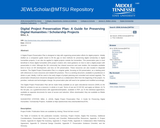
A Digital Project Preservation Plan is designed to help with organizing preservation efforts for digital projects. Initially drafted as a companion guide meant to fill the gap on best methods for preserving digital scholarship or digital humanities projects, it can also be applied to digital projects outside the humanities. This preservation plan is most beneficial to those digital humanities (DH) project creators who need guidance on how to start a digital project with preservation in mind. Although the DH community has shared resources and case studies, the examples available tend to focus on DH development, and less on DH preservation. These resources are also located in disparate locations. The Digital Project Preservation Plan is a singular guide, focusing on DH preservation, as a starting point with references to more resources and related DH practices. This is a working document, available to practitioners in whole or part; ideally, it will be used in the early stages of project planning and consulted and revised regularly. The preservation infrastructure should be designed and built as a collaborative effort from the beginning of the project. As priorities, methods and technologies change, the preservation plan will need to be updated and modified accordingly.
This book has been used in humanities (history) and media courses but is applicable to any course that has digital/web project components.
The Table of Contents for this publication includes:
Summary, Project Charter, Digital File Inventory, Additional Considerations, Preservation Plan-A Summary and Checklist, References/Plan Resources, Appendix A: Project Charter, Appendix B: Digital File Inventory, Appendix C: Project Profile, Appendix D: Collaborators Web Publishing Agreement, Appendix E: Universal Design Checklist, Appendix F: Preservation Guidance Checklist, and the Glossary.
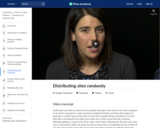
What is the best way to distribute our points?
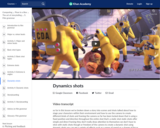
Learn more www.pixarinabox.org.
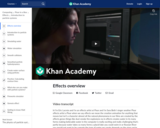
Overview of this lesson.
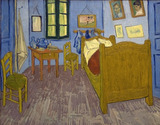
Students will practice reading, oral and listening skills based on the theme Van Gogh’s Bedroom in Arles, by working with a virtual tour of the painter’s bedroom and by producing their own recordings of podcasts about the virtual tour.
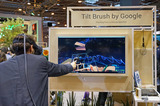
Explore how to use Tilt Brush.
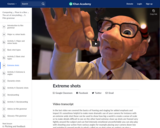
Introduction to extreme shots and angles.

What happens if we change the distance between our aperture and image plane?
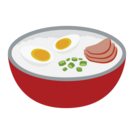
A collection of foreign food icons
To download and access the icons, click on view resource.
This will open the resource in a new google drive tab.
In the top right corner there should be a download button.
The folder will download as a ZIP file.
Once the ZIP file is downloaded, double click on it to open it, and it will create a new folder with all the icons!
The icons are PNG files, which means they have a transparent background, so they can easily be placed on top of other materials.
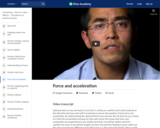
What's the different between a wind force and the force due to gravity? This video covers both Newton's second law of motion and law of gravity.

This class will investigate the ways in which the formal aspects of Western storytelling in various media have shaped both fantasies and perceptions, making certain understandings of experience possible through the selection, arrangement, and processing of narrative material. Surveying the field chronologically across the major narrative genres and sub-genres from Homeric epic through the novel and across media to include live performance, film, and video games, we will be examining the ways in which new ideologies and psychological insights become available through the development of various narrative techniques and new technologies. Emphasis will be placed on the generic conventions of story-telling as well as on literary and cultural issues, the role of media and modes of transmission, the artistic significance of the chosen texts and their identity as anthropological artifacts whose conventions and assumptions are rooted in particular times, places, and technologies. Authors will include: Homer, Sophocles, Herodotus, Christian evangelists, Marie de France, Cervantes, La Clos, Poe, Lang, Cocteau, Disney-Pixar, and Maxis-Electronic Arts, with theoretical readings in Propp, Bakhtin, Girard, Freud, and Marx.

There has been much discussion in recent years, on this campus and elsewhere, about the death of the book. Digitization and various forms of electronic media, some critics say, are rendering the printed text as obsolete as the writing quill. In this subject, we will examine the claims for and against the demise of the book, but we will also supplement these arguments with an historical perspective they lack: we will examine texts, printing technologies, and reading communities from roughly 1450 to the present. We will begin with the theoretical and historical overviews of Walter Ong and Elizabeth Eisenstein, after which we will study specific cases such as English chapbooks, Inkan knotted and dyed strings, late nineteenth-century recording devices, and newspapers online today. We will also visit a rare book library and make a poster on a hand-set printing press.

This class covers the history of 20th century art and design from the perspective of the technologist. Methods for visual analysis, oral critique, and digital expression are introduced. Class projects this term use the OLPC XO (One Laptop Per Child) laptop, Csound and Python software.
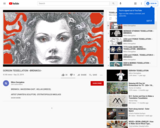
LINEAR TRANSFORMATIONs ON THE PLAIN .
INTRODUCTION TO ISOHEDRALS , BASIC BLOCKS TO SYMMETRIC TILING.
TESSELLATIONs (PERIODIC & APERIODIC)
.
BRENIKOU , MACEDONIA EAST , HELLAS (GREECE).ARTIST (PAINTER & SCULPTOR) : EFSTRATOPOULOS NIKOLAOS ( efstrato71@gmail.com )MUSIC : Εύελδωρ - Λυρογηθής (ANCIEN...

This course provides practical instruction in the design and analysis of non-digital games. Students cover the texts, tools, references and historical context to analyze and compare game designs across a variety of genres, including sports, game shows, games of chance, card games, schoolyard games, board games, and role–playing games. In teams, students design, develop, and thoroughly test their original games to understand the interaction and evolution of game rules. Students taking the graduate version complete additional assignments.

This course is built around practical instruction in the design and analysis of non-digital games. It provides students the texts, tools, references, and historical context to analyze and compare game designs across a variety of genres. In teams, students design, develop, and thoroughly test their original games to better understand the interaction and evolution of game rules. Covers various genres and types of games, including sports, game shows, games of chance, card games, schoolyard games, board games, and role-playing games.

An historical examination and analysis of the evolution and development of games and game mechanics. Topics include a large breadth of genres and types of games, including sports, game shows, games of chance, schoolyard games, board games, roleplaying games, and digital games. Students submit essays documenting research and analysis of a variety of traditional and eclectic games. Project teams required to design, develop, and thoroughly test their original games.

Create 100 icons variations that fit a central theme for a Gameboy-style icon set, such foods, hero portraits, spells, enemies, or robots.

Run as a workshop, students collaborate in teams to design and prototype games for social change and civic engagement. Through readings, discussion, and presentations, we explore principles of game design and the social history of games. Guest speakers from academia, industry, the non-profit sector, and the gaming community contribute unique and diverse perspectives. Course culminates in an end of semester open house to showcase our games.

This course examines relationships between identity and participation in Japanese popular culture as a way of understanding the changing character of media, capitalism, fan communities, and culture. It emphasizes contemporary popular culture and theories of gender, sexuality, race, and the workings of power and value in global culture industries. Topics include manga (comic books), hip-hop and other popular music, anime and feature films, video games, contemporary literature, and online communication. Students present analyses and develop a final project based on a particular aspect of gender and popular culture.

The topic for Fall 2006 is short film and radio plays. This course investigates current trends and topics in German literary, theater, film, television, radio, and other media arts productions. Students analyze media texts in the context of their production, reception, and distribution as well as the public debates initiated by these works. The topic for Fall 2006 is German Short Film, a popular format that represents most recent trends in film production, and German Radio Art, a striving genre that includes experimental radio plays, sound art, and audio installations. Special attention will be given to the representation of German minorities, contrasted by their own artistic expressions reflecting changes in identity and a new political voice. Students have the opportunity to discuss course topics with a writer, filmmaker, and/or media artist from Germany. The course is taught in German.

This course focuses on development of interpretive skills, using literary texts (B. Brecht, S. Zweig) and contemporary media texts (film, TV broadcasts, Web materials). The emphasis is on discussion and exploration of cultural topics in their current social, political, and historical context via hypermedia documentaries. It also covers further refinement of oral and written expression and expansion of communicative competence in practical everyday situations.

Prepares students for working and living in German-speaking countries. Focus on current political, social, and cultural issues, using newspapers, journals, TV, radio broadcasts, and Web sources from Germany, Austria, and Switzerland. Emphasis on speaking, writing, and reading skills for professional contexts. Activities include: oral presentations, group discussions, guest lectures, and interviews with German speakers. No listeners.
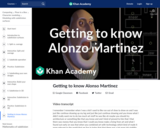
What makes Alonso tick?
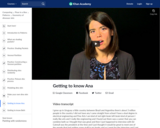
Get to know more about Ana.
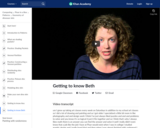
Get to know more about Beth.
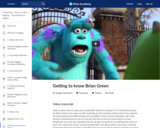
Find out what makes Brian tick.
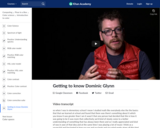
Getting to know more about Dominic Glynn!
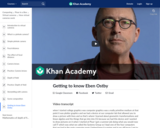
Get to know more about Eben Ostby.
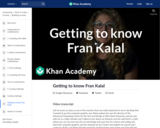
Let's get to know Fran Kalal.
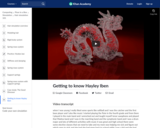
Find out more about Hayley.
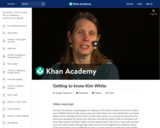
Getting to know Kim White.
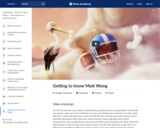
Get to know more about Matt Wong.
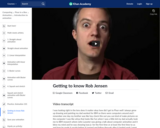
How did Rob start out?

Find out more about Susan Fong!
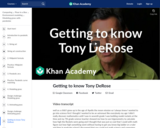
Learn about Tony DeRose.
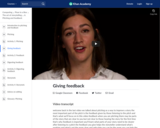
How to give constructive feedback.

This course explores how and why Japan, a late-comer to modernization, emerged as an industrial power and the world's second-richest nation, notwithstanding its recent difficulties. We are particularly concerned with the historical development of technology in Japan especially after 1945, giving particular attention to the interplays between business, ideology, technology, and culture. We will discuss key historical phenomena that symbolize modern Japan as a technological power in the world; specific examples to be discussed in class include kamikaze aircraft, the Shinkansen high-speed bullet train, Godzilla, and anime.
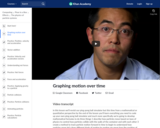
First let's review position, velocity and acceleration vs. time curves.

Short Description:
A scaffolded guide to the production of HDR panoramas
Long Description:
HDR panoramas are a beautiful and versatile form of photography, and are also a vital tool for games and 3D animation. However, they are difficult to produce correctly and harder to master. This book presents a scaffolded approach to the various production techniques needed for the creation of HDR panoramas, and explores the best available tools in a variety of software packages.
Word Count: 4875
(Note: This resource's metadata has been created automatically by reformatting and/or combining the information that the author initially provided as part of a bulk import process.)
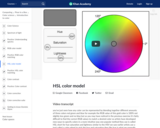
Introduction to another color selection model we use called HSL.
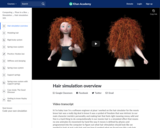
Overview of this lesson.

MAS.450 is a laboratory course about holography and holographic imaging.
This course teaches holography from a scientific and analytical point of view, moving from interference and diffraction to imaging of single points to the display of three-dimensional images. Using a "hands-on" approach, students explore the underlying physical phenomena that make holograms work, as well as designing laboratory setups to make their own images. The course also teaches mathematical techniques that allow the behavior of holography to be understood, predicted, and harnessed.
Holography today brings together the fields of optics, chemistry, computer science, electrical engineering, visualization, three-dimensional display, and human perception in a unique and comprehensive way. As such, MAS.450 offers interesting and useful exposure to a wide range of principles and ideas. As a course satisfying the Institute Laboratory Requirement, MAS.450 teaches about science, scientific research, and the scientific method through observation and exploration, hinting at the excitement that inventors feel before they put their final equations to paper.

An introduction to the literary form of comics - as a comic! Introducing and defining key concepts in comic studies, as well as debunking common myths about comics, this booklet is an introduction to the discipline. Covers topics such as comic terminology, grammar, layout, styles, transitions, and closure, with a self-quiz to take at the end.

How to Canva: Tips and Tricks is an online introductory course on Canva. It is designed as open educational resources for educators and all. In this course, you will learn how to customise text, text effects, colours, photos, videos and elements plus pro tips and Ideas for Creative uses of Elements, Keywords and Styles. The videos are concise, purposeful and delivered in easy-to-follow lessons that progressively build one's skills over time. By the end of this course, you will be able to create an attractive Instagram post. Click on View Resource and let's get started!
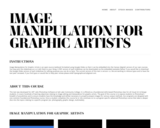
Image Manipulation for Graphic Artists is an open source textbook formatted using Google Slides so that it can be embedded into the Canvas (digital) version of our own courses. You may post the slideshows as is or edit them to your liking. A PDF version of each slideshow can be downloaded via the embedded examples below. If you would like to download the Google Slides version of each slideshow for editing purposes you can do so here. The current version of this text is version 1.0. We are working to remove typos and to have the text peer reviewed. If you find typos or would like to help peer review please email opengraphicarts@gmail.com.
This text was developed for ART 1280 Photoshop Software at Salt Lake Community College. It is offered as a foundational skills-based Photoshop class for all Visual Art & Design students. It covers hundreds of learning objectives relating to image editing and manipulation for graphic artists. The goal of this course is to expose students to Photoshop’s breadth of possibilities and to ensure students have the knowledge and skillset necessary to properly prepare images for various output methods. Our programs are designed with one common foundational Photoshop course. Once a student completes this course he or she continues on to a program specific advanced Photoshop course that takes a deeper dive into the topics relating to a specific program (ex- photography, graphic design, multimedia).

This is an image of a family: a man, woman, baby from Public Domain Images: https://www.publicdomainpictures.net/en/view-image.php?image=10550&picture=family-of-three
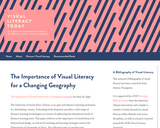
Conference Proceedings and an extensive Visual Literacy Bibliography

Preliminary Research Exhibition
Short Description:
This exhibition presents the preliminary major research project ideas of OCAD University’s Inclusive Design 2019/2021 cohort. These projects explore a spectrum of themes, ranging from healthcare, to sensory experiences, to storytelling and services for cultural communities, to neurodiversity, and finally, to design practices and processes themselves.
Word Count: 28442
(Note: This resource's metadata has been created automatically by reformatting and/or combining the information that the author initially provided as part of a bulk import process.)
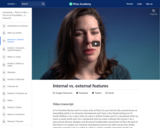
Whats on the inside vs. outside of a character?

This workshop is designed to introduce students to different perspectives on politics and the state of the world through new visualization techniques and approaches to interactive political gaming (and selective 'edutainment'). Specifically, we shall explore applications of interactive tools (such as video and web-based games, blogs or simulations) to examine critical challenges in international politics of the 21C century focusing specifically on general insights and specific understandings generated by operational uses of core concepts in political science.

This course is based on the work of the MIT-African Internet Technology Initiative (MIT-AITI). MIT-AITI is an innovative approach by MIT students to integrate computers and internet technology into the education of students in African schools. The program focuses upon programming principles, cutting-edge internet technology, free open-source systems, and even an entrepreneurship seminar to introduce students in Africa to the power of information technology in today's world.
MIT-AITI achieves this goal by sending MIT students to three African nations in order to teach both students and teachers through intensive classroom and lab sessions for six weeks. The AITI program is implemented with emphasis on classroom teaching, community-oriented projects, and independent learning.
This course has two major components:
Content from a spring 2005 preparatory seminar offered by the MIT-AITI leadership. The goal of this seminar is to adequately prepare the AITI student teachers for their upcoming summer experiences in Africa.
A snapshot of the summer 2005 MIT-AITI program. This includes the Java®-based curriculum that MIT-AITI ambassadors teach in Africa each year, as well as content from an entrepreneurship seminar offered concurrently with the IT class.
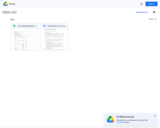
This course for first- or second-year college students was designed to be taught as a hybrid course that meets synchronously (face to face or on Zoom) twice a week, or an in-person course with meetings twice a week over a 10-week term at Southern Oregon University.
This course covers a foundation in the developing field of arts-based research (ABR) and a basic practicum in the skills for conducting research, critically analyzing data, and presenting findings in ABR.
This course was designed using a basis in aesthetic practices with a pedagogical lens of feminist/BIPOC theory to examine how data science has been and continues to be used for special interests that perpetuate barriers to access, diversity and inclusion.

This course examines civic media in comparative, transnational and historical perspectives through the use of various theoretical tools, research approaches, and project design methods.

This course is intended for students pursuing research projects at the Media Laboratory. Topics include Media Lab research areas, documenting research progress, ethical issues in research; patents, copyrights, intellectual property, and giving oral, written, and online presentations of results. A final oral presentation is required. Enrollment limited with preference given to students in the Media Arts and Sciences freshman program.

Short Description:
Introduction to Drafting and AutoCAD 2D was written as a tool to guide and teach you to master AutoCAD. No two students learn at the same pace, therefore the eook was written with competency-based modules. The competency-based modules are bite-size pieces that allow you to work at your own pace. They can be used to learn by distance education, correspondence, online, instructor-lead classes, or by individuals teaching themselves to use AutoCAD in their own home or office.
Word Count: 111969
ISBN: 978-1-77420-134-3
(Note: This resource's metadata has been created automatically by reformatting and/or combining the information that the author initially provided as part of a bulk import process.)

Short Description:
This book is a tool to guide and teach you to master AutoCAD 3D. No two students learn at the same pace, therefore the book was written with competency-based modules. The competency-based modules are bite-size pieces that allows you to work at your own pace. They can be used to learn by distance education, correspondence, online, instructor-lead classes, or by individuals teaching themselves to use AutoCAD in their own home or office.
Word Count: 65964
ISBN: 978-1-77420-136-7
(Note: This resource's metadata has been created automatically by reformatting and/or combining the information that the author initially provided as part of a bulk import process.)

Short Description:
This book contains self-paced learning modules that were written as a tool to guide and teach you to master Inventor. No two students learn at the same pace, therefore, the modules were written as competency-based bite-size pieces to allow you to work at your own pace. They can be used in correspondence courses, online courses, instructor-lead classes or by individuals teaching themselves to use Inventor in their own home or office.
Word Count: 60604
(Note: This resource's metadata has been created automatically by reformatting and/or combining the information that the author initially provided as part of a bulk import process.)

This course is an introduction to the theory and practice of the process of designing games and playful experiences. Students are familiarized with methods, concepts, techniques, and literature used in the design of games. The strategy is process-oriented, focusing on aspects such as: Rapid prototyping, play testing, and design iteration using a player-centered approach.

This course provides a critical analysis of mass media in our culture. Various types of media such as books, films, video games, and online interactions will be discussed and reviewed. This course will also evaluate how information and ideas travel between people on a large scale.

Introduction to Media Studies is designed for students who have grown up in a rapidly changing global multimedia environment and want to become more literate and critical consumers and producers of culture. Through an interdisciplinary comparative and historical lens, the course defines "media" broadly as including oral, print, theatrical, photographic, broadcast, cinematic, and digital cultural forms and practices. The course looks at the nature of mediated communication, the functions of media, the history of transformations in media and the institutions that help define media's place in society.
Over the course of the semester we explore different theoretical perspectives on the role and power of media in society in influencing our social values, political beliefs, identities and behaviors. Students also have the opportunity to analyze specific media texts (such as films and television shows) and explore the meaning of the changes that occur when a particular narrative is adapted into different media forms. We look at the ways in which the politics of class, gender and race influence both the production and reception of media. To represent different perspectives on media, several guest speakers also present lectures. Through the readings, lectures, and discussions as well as their own writing and oral presentations, students have multiple opportunities to engage with critical debates in the field as well as explore the role of media in their own lives.

Introduction to Media Studies is designed for students who have grown up in a rapidly changing global multimedia environment and want to become more literate and critical consumers and producers of media. Through an interdisciplinary comparative and historical lens, the course defines "media" broadly as including oral, print, performance, photographic, broadcast, cinematic, and digital cultural forms and practices. The course looks at the nature of mediated communication, the functions of media, the history of transformations in media and the institutions that help define media's place in society. This year’s course will focus on issues of network culture and media convergence, addressing such subjects as Intellectual Property, peer2peer authoring, blogging, and game modification.
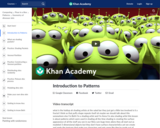
Brief overview of what we'll cover in this lesson.

This course provides practical instruction in the fundamentals of analog and digital SLR and medium/large format camera operation, film exposure and development, black and white darkroom techniques, digital imaging, and studio lighting.
This semester we will explore the MIT Department of Brain and Cognitive Sciences for our theme- and site-specific term project, which provides opportunities to develop technical skills and experimental photographic techniques, and for personal artistic exploration. Final projects will be presented on site in exhibition format.
Work in progress is continuously presented and discussed in a critical forum. Lectures, readings, visiting professionals, group discussions, and site visits encourage aesthetic appreciation of the medium and a deeper understanding of our semester theme, as well as a critical awareness of how images in our culture are produced and constructed.
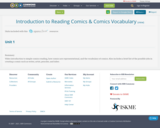
Video introduction to simple comics reading, how comics are representational, and the vocabulary of comics. Also includes a brief list of the possible jobs in creating a comic such as writer, artist, penciler, and inker.

This class serves as an introduction to video recording and editing, presenting video as a tool of personal apprehension and expression, with an emphasis on self-exploration, performance, social critique, and the organization of raw experience into aesthetic form (narrative, abstract, documentary, essay). Students are required to complete a variety of assignments to learn the basics of video capture and editing, culminating in a final assignment that has to do with personal storytelling.

This course offers an introduction to the interdisciplinary study of videogames as texts through an examination of their cultural, educational, and social functions in contemporary settings. Students play and analyze videogames while reading current research and theory from a variety of sources in the sciences, social sciences, humanities, and industry. Assignments focus on game analysis in the context of the theories discussed in class. Class meetings involve regular reading, writing, and presentation exercises. No prior programming experience required. Students taking the graduate version complete additional assignments.
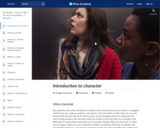
Welcome to our lesson on character development.
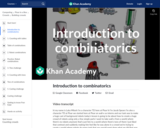
Overview of this topic.
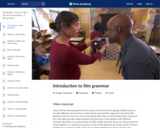
Overview of film grammar.
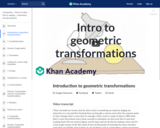
how are virtual sets built in the computer?
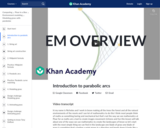
What do parabolic arcs have to do with blades of grass?